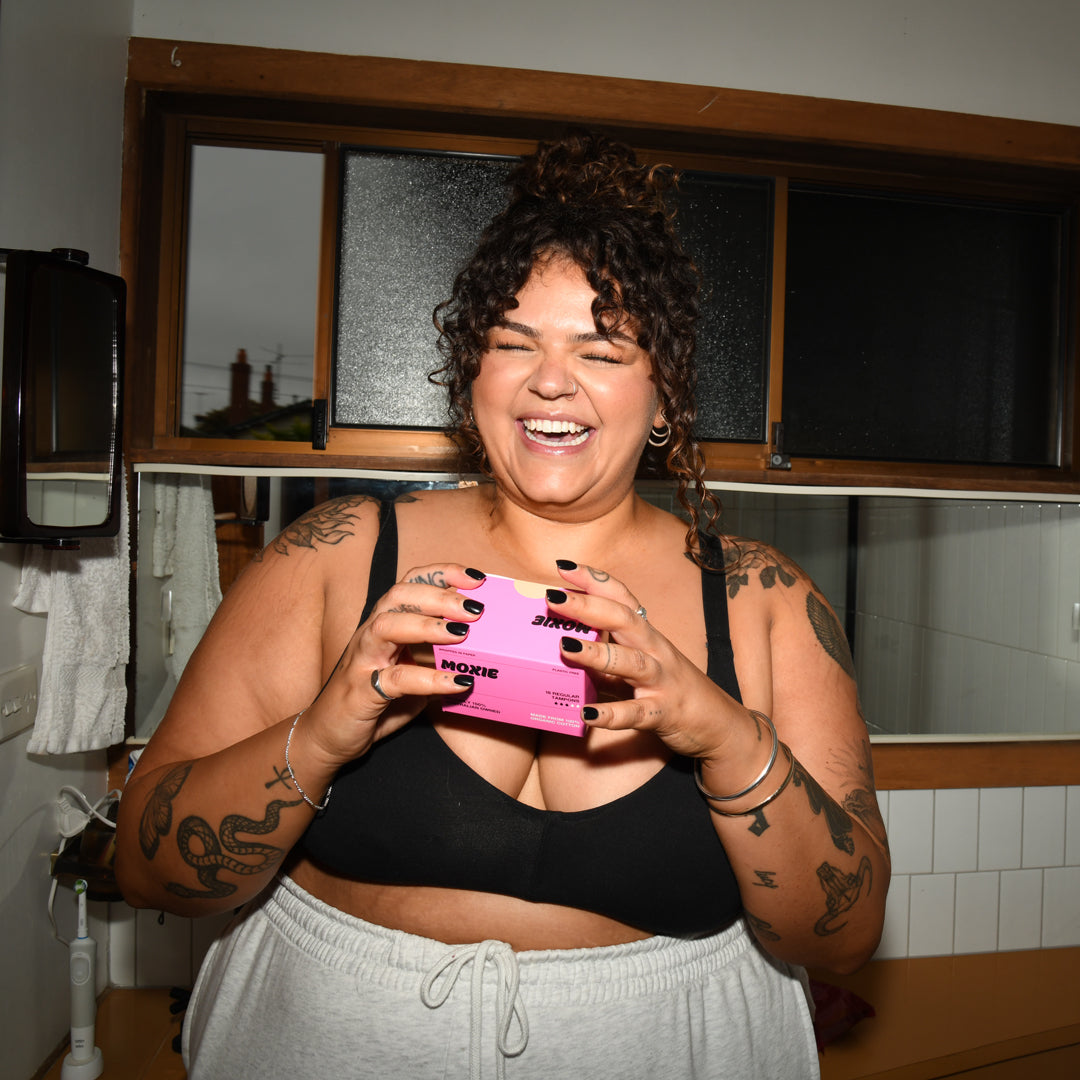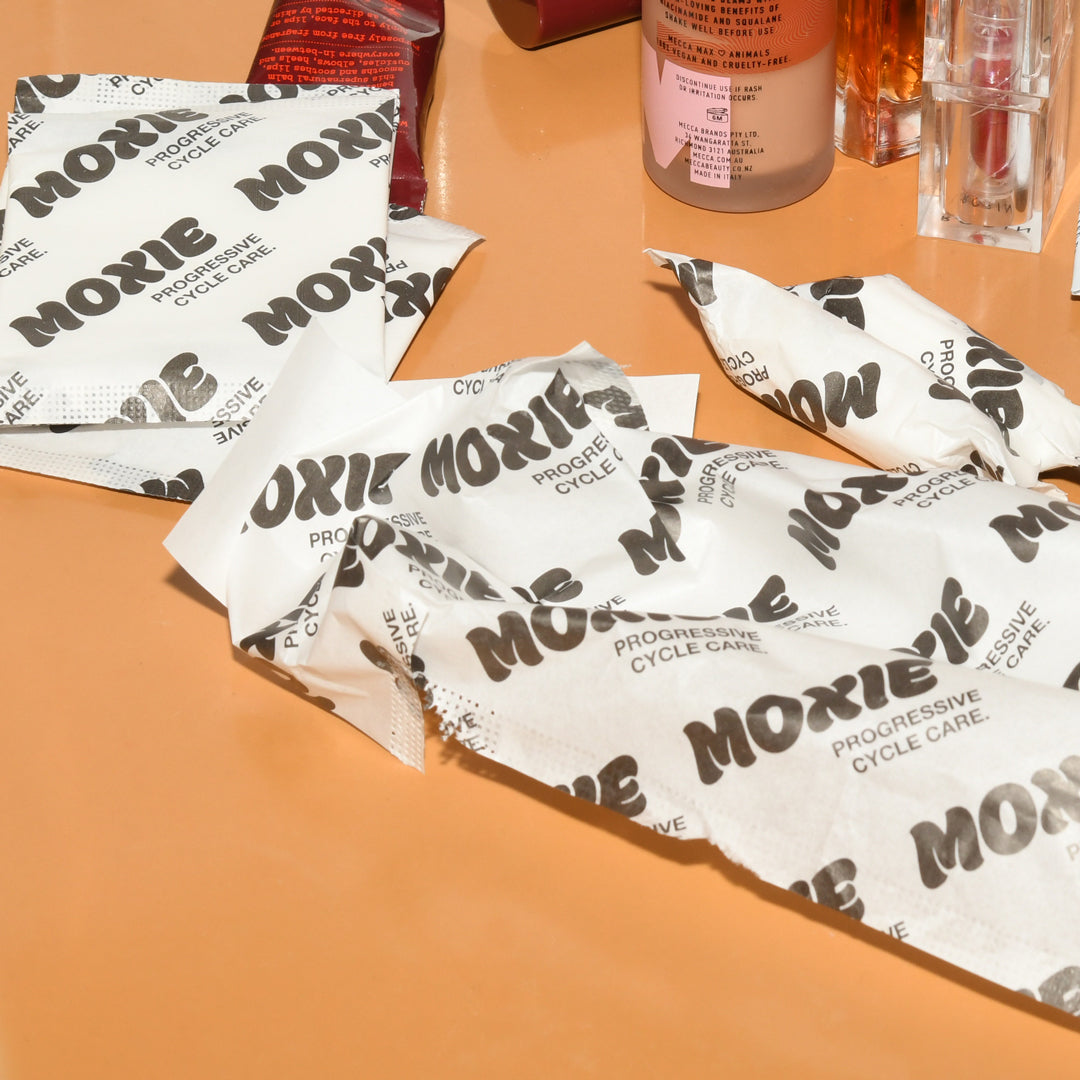What I learned when I saw a pelvic physiotherapist.

Vagina pains, a weak pelvic floor and a heavy flow of anxiety. I had enough. I swapped embarrassment with curiosity, leading me to book an appointment with a sexologist. It was more than getting an educational “refresh” around sex and the anatomy; I wanted to unpack my relationship with sex and my own body.
I was also referred to a pelvic physiotherapist to check the vaginal and pelvic pain I’d been dismissing for the last six months. What I thought could be an issue with my copper IUD, or something more serious (perhaps endometriosis?) resulted in something more surprising: anxiety.
I’m a naturally-inclined anxious person. Having BPD (Borderline Personality Disorder) and an ED (eating disorder), I feel I'm constantly on edge. These conditions negated me to explore my sexual well-being, especially with the air of body dysmorphia - making it hard for me to connect with my body. Whilst I’ve been transfixed with managing my mental health for the last decade, the sexy bits weren’t part of the plan. So I pushed through, and then dismissed any pain I was experiencing when using tampons or having penetrative sex. I accepted the discomfort as my 'normal'.
Gaps in my knowledge popped up from the get-go of my sex and pelvic therapy journey. Chloe Cox, a Melbourne-based pelvic physiotherapist (specialising in pelvic and sexual pain), says it's a familiar predicament. “Lack of knowledge on pelvic conditions, pain and the anatomy is hugely common. Education is the biggest part of our treatment - especially with pain patients", she says. “Understanding why you are in pain is so important; it’s the first step to overcoming what can be a debilitating and isolating condition,” she continues. And, I couldn’t agree more - I began to see my pain in a new but somewhat familiar light.
There are a plethora of things you can learn about the pelvic floor and associated pain when undergoing pelvic physiotherapy, but a few really stood out for me. Here are my top five takeaways as a result of my own experience with pelvic physiotherapy:
Swap ‘tight and loose’ for ‘contract and relax’.
Cue my first session: I explained to Chloe, my therapist, that I must have a weak pelvic floor because tampons fall out of me every time I pee. I was so sure I’d be given a regime of daily Kegels (a.k.a. pelvic floor exercises) to strengthen it and pull it back up, so to speak.
But my situation was in fact the opposite: my pelvic floor muscles were overactive and unable to relax. I also felt vaginal pain and discomfort - my body felt like it was under attack.
“Being ‘tight’ or ‘loose’ is such an outdated view of how the pelvic floor or vagina should function - like a lot of things, it’s steeped in patriarchy!” says Chloe.
“In reality, the vagina is a stretchy tube and the pelvic floor muscles surrounding it determine how easy penetration is. Ideally we want a pelvic floor that can both contract with decent strength, and also relax effectively to allow for comfortable penetration.”
A strong, healthy pelvic floor is important for things like continence, but mine were so conditioned by anxiety and stress that they were ultimately inducing pain. As a result, my treatment regime was a bit different to what I initially expected and involved what is known as pelvic floor massage.
Your pelvic floor might need a massage to help it relax, too.
Whether you love your temples massaged or a good back rub, your pelvic floor may need some TLC, too. Pelvic physios will generally first conduct an internal pelvic exam (only if you’re comfortable with it, of course - it's important to find a clinician you can trust) to assess the pelvic muscles before diagnosing your issue and devising a treatment plan.
“We employ certain techniques in clinical practice that teach patients how to perform internal pelvic massage at home,” Chloe shares. The techniques I was shown required using the thumbs to perform the internal massage. Dilators are also sometimes offered as an option, too.
“More recent research suggests that it's more about re-training and making the body's response to touch less threat-based. This is referred to as 'downtraining', Chloe says. "Essentially each treatment involves graded exposure to penetration. Over time, your body learns that what you're experiencing is not a threat and in turn, the muscles learn to relax,” she continues.
Circling back to my anxiety being a factor to a very unrelaxed pelvic floor for a moment... I hold a lot of stress and tension in my body. Imagine that feeling when you’ve had a flood of anxiety. Your jaw clenches. Your back stiffens. I catch myself doing this all the time, even when I wake up. From a psychological perspective, it’s the body putting that alarm bell on to any “threats”. The pelvic floor has the same response as the rest of your body. But since I wasn’t in-tune with it like said jaw and back, I thought it was pain from somewhere else.
There’s a difference between pain and tightness.
My concept of pain shifted each week of treatment. Initially, all I could describe was that it hurt. As my treatment progressed, I started to gain more awareness and education around my body and got better at discerning the difference between what was actual physical pain and what was otherwise simply muscle tightness.
Over time, it also got easier to identify my trigger points and their varying degrees of pain, tightness or tenderness. The massage techniques I was taught, combined with breathwork (more on this below), led to immediate relief when I was experiencing discomfort.
Breathwork is key.
After practising yoga and pilates for the last decade, I thought I had breathwork down pat. I would ‘pull my pelvic floor up and hold’ during pilates exercises and breathe through my chest only. And, circling back to the body dysmorphia, I didn’t like the sensation of my tummy expanding - this apical breath became my norm. This is commonly seen in patients suffering from Vaginismus, Vulvodynia, Vestibulodynia, and Endometriosis.
“We see these patients often don’t expand through the diaphragm well,” Chloe says. "They tend to apically breathe through their chest and shoulders and even potentially breath-hold when trying to contract their pelvic floor", she adds. Paired with the threat-induced anxiety, everything down there was tightening up in anticipation of more pain.
“Breathwork is huge when it comes to pelvic floor management. Your diaphragm and pelvic floor work together like a piston in the abdomen to help control our abdominal pressure,” Chloe shares. Through my sessions with Chloe, I had to re-train myself on how to belly-breathe.
Chloe says the best way to think of it is that “when one relaxes, so should the other: the diaphragm relaxes down when we breathe in and so (should) the pelvic floor. On exhale, return to their baseline position.”
Though it didn’t come easily to me at first, once I got the hang of it it was a gamechanger. Pain levels decreased with every breath and release, and my pain inched further down the scale with every session.
Final thoughts: get to know your body, and go with your own flow.
There’s much more to the pelvic floor than that pop culture trope of doing your Kegels. Even though you may not experience any pain or discomfort, having a deeper understanding of your pelvic floor is invaluable.
After each session, I felt more in tune with my body. The treatment changed my relationship with myself for the better in terms of my body, sexual experiences and intimate health. It's been incredibly empowering to have that sense of connection and understanding of what I was experiencing and learning how to manage it in future. Determining a gauge for pain — whether I’m on my period or having sex — helps me feel in control, and any anxiety I feel melts away. Plus, I’ve stopped putting my intimate health on the back burner; it now has a place in my priorities alongside mental health. This means having open conversations (like this!) about it, and continuously educating and checking in with myself.
Please note: This piece is the personal account of the writer and does not constitute, nor should it substitute, a personalised medical diagnosis. If you are experiencing any of what has been discussed in this piece, or if you have any specific questions or concerns about your own health and wellbeing, we encourage you to check in with a trusted health practitioner.

About the writer
Asheda Weekes (she/her) is a Malaysian/Chinese-Australian writer based in Naarm (Melbourne). Her essays and poetry centre around mental health, relationships and culture. She also works as a copywriter and studio manager, specialising in website and social media content for various industries, including weddings, fashion, and beauty/health. She's recently published her first poetry anthology ‘I Subside By The Seaside’.



